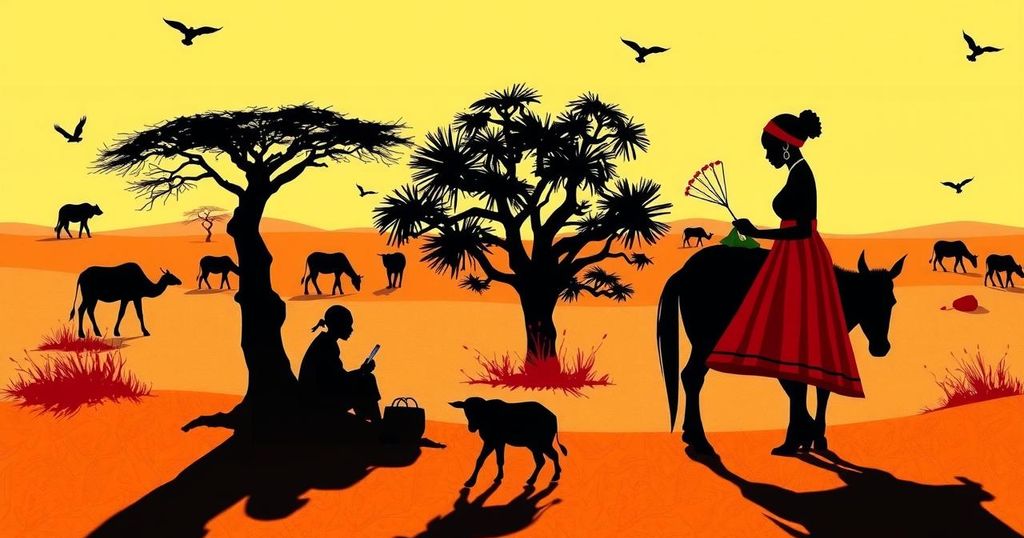Zimbabwe and Namibia Resort to Culling Elephants Amid Severe Drought and Food Insecurity
Severe droughts in southern Africa have resulted in Zimbabwe and Namibia culling elephants to address food shortages affecting millions. Zimbabwe plans to cull 200 elephants, marking its first such action since 1988, while Namibia previously announced the culling of 83 elephants. These measures aim to mitigate resource scarcity and human-wildlife conflict, exacerbated by the El Niño weather pattern that has impacted food security for approximately 70 million people in the region.
On September 25, 2024, severe drought has severely affected agricultural yields in southern Africa, prompting Zimbabwe and Namibia to make a controversial decision regarding wildlife management. After experiencing its most devastating drought in forty years, Zimbabwe’s government has announced plans to conduct a mass culling of elephants, projecting that approximately 7.6 million people may face food shortages in the upcoming lean season. This move marks the first culling of elephants since 1988. Companion to Zimbabwe’s decision, Namibia has also undertaken a culling of 83 elephants, alongside other wildlife, in response to similar drought-related challenges. The governments have determined that the elephants selected will be removed from regions where human-elephant conflict has recently intensified due to resource scarcity. Park officials in both nations argue that reducing elephant populations will aid in both addressing human-elephant conflict and managing park overpopulation, which has significantly exceeded local carrying capacities. Meanwhile, environmental repercussions continue to unfold across the region, compounded by the El Niño phenomenon, which has already impacted food security for millions.
The ongoing drought in southern Africa, exacerbated by the El Niño weather pattern, has drastically affected crop yields, placing about 70 million individuals at risk of food insecurity. Zimbabwe is currently facing unprecedented agricultural challenges, leading to governmental responses, including plans to cull elephant populations. As natural resources become increasingly scarce due to drought, conflicts between humans and wildlife are becoming more frequent, prompting drastic management measures. Namibia’s proactive approach reflects a growing concern for both biodiversity and human livelihoods, as both countries seek to alleviate the pressing food needs of their citizens while managing wildlife conservation efforts.
In conclusion, the responses from Zimbabwe and Namibia reflect the urgent need to address the dual crises of food security and wildlife management in the face of extreme drought conditions. The decisions to cull elephants intend to provide immediate relief for affected communities while simultaneously attempting to mitigate human-wildlife conflicts. This situation underscores the complexities of environmental management strategies in the wake of climate-induced challenges, highlighting the critical balance between human needs and wildlife conservation.
Original Source: www.circleofblue.org




Post Comment